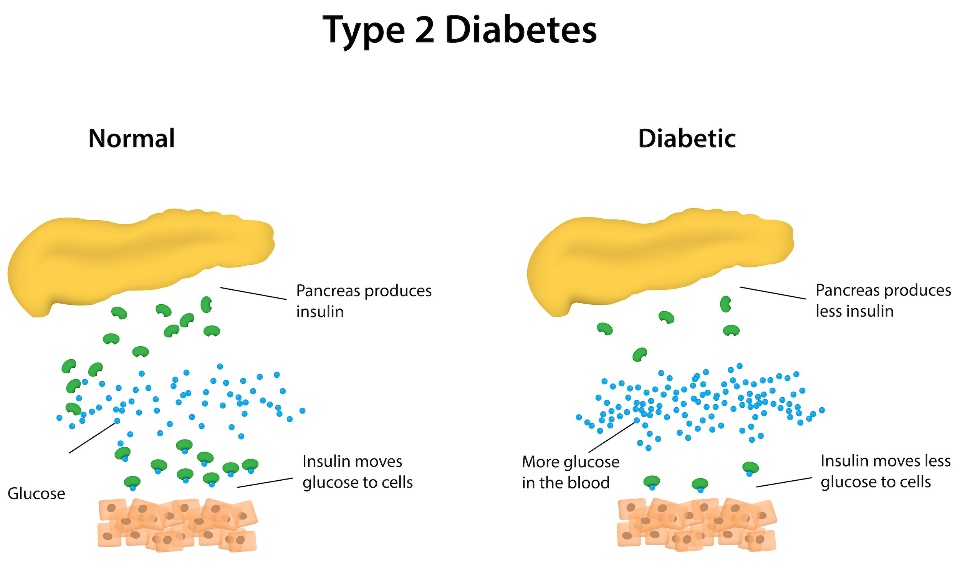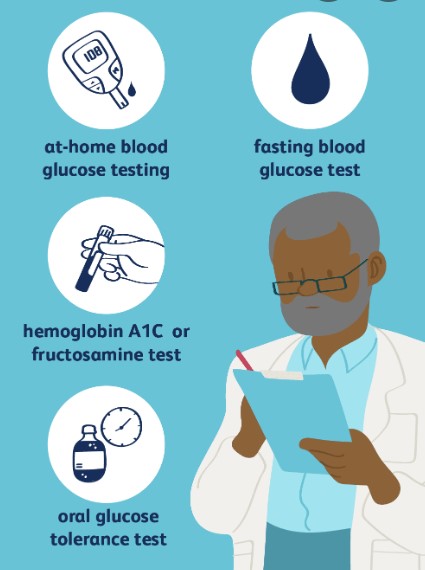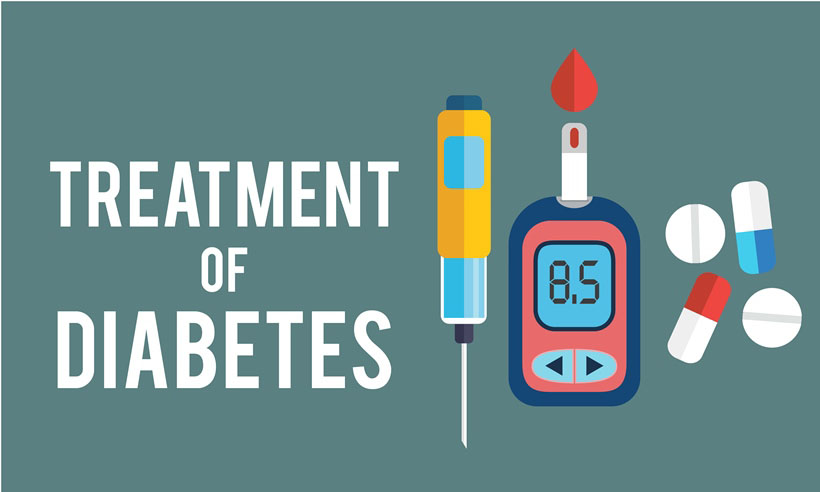Type 2 Diabetes
Type 2 diabetes mellitus is a chronic condition characterized by a high level of sugar in the blood. People diagnosed with type 2 diabetes mellitus are said to have insulin resistance. Type 2 DM is the most common type of diabetes. Read More
Top Doctors For Type 2 Diabetes Treatments
Top Hospitals For Type 2 Diabetes Treatments
Type 2 Diabetes
Table of contents
What is type 2 diabetes mellitus (T2DM)?
Type 2 diabetes mellitus is a chronic condition characterized by a high level of sugar in the blood. People diagnosed with it are said to have insulin resistance. Type 2 DM is the most common type of diabetes.

Causes
A mixture of many things, when linked with each other, causes diabetes. But more likely to happen in:
- The people whose family members are mother, father, siblings, or grandparents have diabetes, the chances of that person twice raising due to the presence of DNA particles. As per the survey, one can inherit even more risk if the father has type 2 diabetes.
- Less active and more sitting on the couch also prominently develop type 2 diabetes in a number of people. Thus, a sedentary lifestyle can make them more susceptible to type 2.
- A body filled with blood pressure, triglycerides, cholesterol, and heart diseases doesn’t take much time to catch type 2 Diabetes.
- Occasionally, gestational diabetes can occur in women during the pregnancy phase or after delivering a fat baby.
- When beta cells break and do not join for a longer period, type 2 diabetes takes place in the body.
What are the risk factors for type 2 diabetes mellitus?

Numerous risk factors align with this condition. Some are listed below:
Polycystic Ovary Syndrome – Found in women only, PCOS is interlinked with type 2 diabetes through insulin. Its situation is similar to the latter; both are insulin resistant. So, 50% of the women who are in their 40s or 50s and have PCOS are either affected with Type 2 Diabetes or are on edge.
Depression and stress hormones – Yes, mental health is as important as physical health. Overthinking and depression are undeniable risk factors for type 2 diabetes.
Ethnicity – The targeted audience is Alaska Natives, Latinos, Hispanic Americans, Native Americans, etc.
Age – Half of the people in their 40s or 50s have this disease.
Physical inactivity
History of gestational diabetes
Poor nutrition during pregnancy.
Symptoms

Symptoms of type 2 diabetes slowly develop, and in the early phase, the body doesn’t show symptoms at all, but when blood sugar levels become uncontrollable, symptoms begin to appear.
Sudden Weight loss – In spite of eating more and calorie-dense food, the whole body’s sugar is in blood and other parts, such as muscles, which break fat and stores energy. It gives a red signal to the people who haven’t changed their diet yet.
Extreme hunger or Hyperphagia – Though one eats big portions, after half an hour or 45 minutes, the person starts feeling hungry, and it is intolerable. When the person starts eating sugary foods, their blood glucose level rises again.
Often get thirsty – It doesn’t matter whether the day is hot, cold, or normal. A person with this condition crosses the daily water intake requirement because the mouth gets dry, and saliva doesn’t stay in the mouth for more time.
Repetitive urination – This is directly linked with thirst as the person drinks more water; frequent urination is obvious.
Blurry vision – Type 2 diabetes is very chronic as it directly affects the eyes by making vision blurry. A person can’t see properly, and sometimes specs and contact lenses help.
Infection – The body surrenders against various infections. Starting from viral infection to yeast infection, all happen if glucose level doesn’t stay stable.
Foot Issues – Hard lumps, deep, popped, fluid-filled, and blood blisters can all happen in type 2 diabetes and takes a while to fade.
Neuropathy – It destroys the nerve tissues and cells. Mostly starts hurting their hands and then move toward the leg. Peripheral Neuropathy targets people maximum the time. Symptoms include tingling, weakness, burning sensation, etc.
Retinopathy – Type 2 diabetes and retinopathy are connected as the eye’s retina starts dysfunctioning, causing damage to the blood vessels.
Kidney problems – When blood pressure and blood sugar both boost, they directly lead to kidney damage, also known as nephropathy (harms nephrons).
How is type 2 diabetes mellitus diagnosed?

Tests of Type 2 and type 1 diabetes are almost similar, but some extra tests such as lipid profile and random blood glucose test are in addition to this.
Oral Glucose Tolerance Test – In this patient is given a dose of glucose orally before 2 hours of drinking and after two hours of drinking to compare the results.
Lipid Profile – It calculates the High-density lipid cholesterol and low-density lipid cholesterol along with triglycerides.
HbA1c test- indicates a person’s average blood glucose levels over the past two to three months.
Fructosamine test- It is similar to HbA1c test which is similar to HbA1c test, which measures blood sugar levels over two to three weeks [1].
Oral glucose tolerance test- It measures the body’s ability to clear glucose out of the bloodstream.
How is type 2 diabetes mellitus treated?

It is a manageable disease, and diet plays a prominent role in keeping the overall body health and blood sugar levels in the normal range. The journey begins at the time when the patient takes the lifestyle seriously.
Diet for Type 2 Diabetes:
- Fiber-rich food and food that contains equal amounts of protein, carbs, and healthy fats.
- In protein, one can eat chicken, meat, eggs, lentils, garbanzo beans, and black beans – which controls diabetes level
- Healthy fats include almonds, cashews, pistachios, other nuts, olive oil, coconut, etc.
- Complex carbs – Maize, Barley, brown pasta, etc.
- Vitamins – Fruits and veggies (less sugary fruits such as oranges, kiwi, apples, and avocado are recommended)
- Replace white sugar with brown or coconut sugar and jaggery powder.
What to avoid:
- One should avoid sugary soda, cakes, dates, mangoes, and bananas.
- White bread, white sugar, etc.
Exercise
Although people with type 2 diabetes possess less energy, they can still indulge in low-intensity exercises such as walking, lawn mowing, planting flowers and shrubs, yoga, brisk walking, etc.
Avoid a sedentary and inactive lifestyle.
Many people have been cured of this disease with a healthy diet and exercise.
Type 2 Diabetes Medications
GLP 1 Analogs – It gives a signal to the liver, and the liver puts a break on passing sugar; it is given in the form of an injection and gives a decent result.
Thiazolidinediones – When insulin becomes insensitive, the dose of rosiglitazone can help.
Acarbose – As carbs have glucose in them so, to balance the carbs in the body, acarbose is the key.
Biguanides – It contains metformin and normalizes blood sugar level.
Can type 2 diabetes mellitus be prevented?
- Frequently visiting the doctor’s office for check-ups and follow-ups via mail or call and implementing that in life can help prevent this condition.
- Eating as per the doctor’s designed diet plans.
- Giving yourself time for relaxing and exercising
- Less stressing
- By becoming a member of a laughing club or by spending time with family.
All these things can easily prevent the condition.
FAQ
No, it may go temporarily, but it can strike back anytime. Once it enters the body, it’s kind of impossible to remove it, but it can be controlled in the patient’s hands.
Prediabetes is something that increases sugar levels but doesn’t enter the phase of diabetes, so we can say it is an early stage of diabetes if precautions are not taken then.
Minimum 1 time in a day, and if a person has around 300 or more, then definitely 4-5 times maximum limit is 7-8 times.
The complications associated with this condition are listed below:
1) Macrovascular complications associated with large blood vessels include- coronary artery disease, cerebrovascular disease, and peripheral artery disease.
2) Microvascular complications associated with small blood vessels include- retinopathy, neuropathy, nephropathy, etc.
3) Sleep apnea- obstructive sleep apnea is most commonly seen in people with type 2 diabetes mellitus.
4) Dementia- the risk of having Alzheimer’s disease and other disorders that cause dementia is high in type 2 diabetes patients.
5) Hearing impairment.
It is the most common type of diabetes worldwide. About 1 in 10 Americans have the disease. It is the 7th leading cause of death in the USA [2].
Patients who are diagnosed early and treated have a good prognosis. The patient has to continue to take medications for the rest of their life. Maintaining regular follow-ups with the doctor, following the medications, and following a healthy lifestyle will result in a good prognosis. Diabetes, if left untreated, will result in life-threatening complications and is sometimes fatal.
References
- https://www.verywellhealth.com/how-hyperglycemia-is-diagnosed-4163423
- https://my.clevelandclinic.org/health/diseases/21501-type-2-diabetes

























































